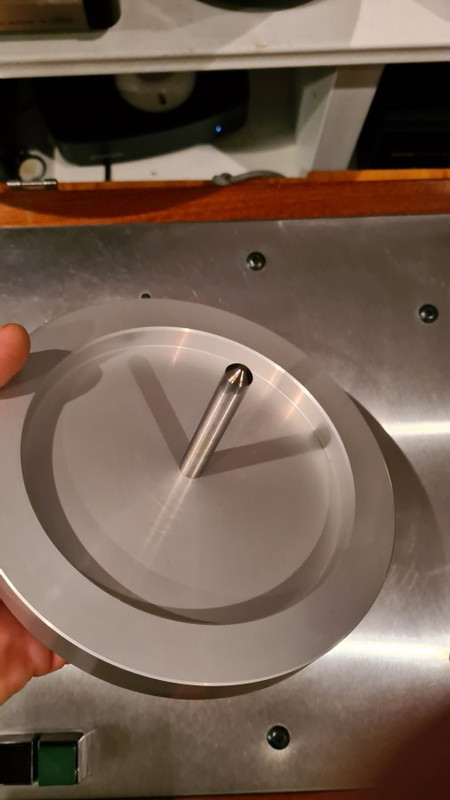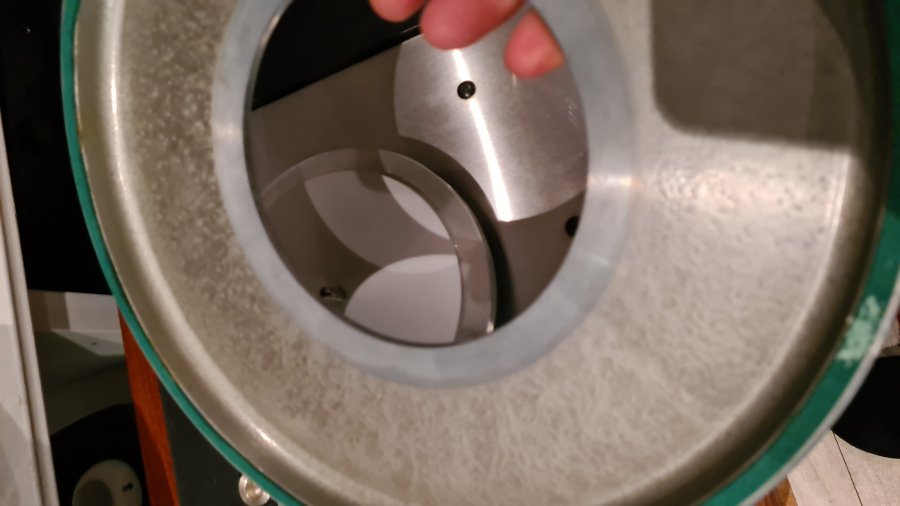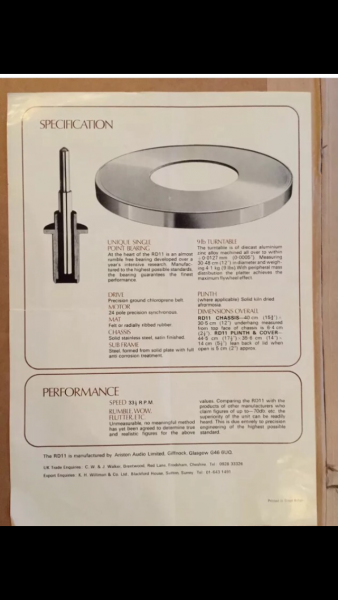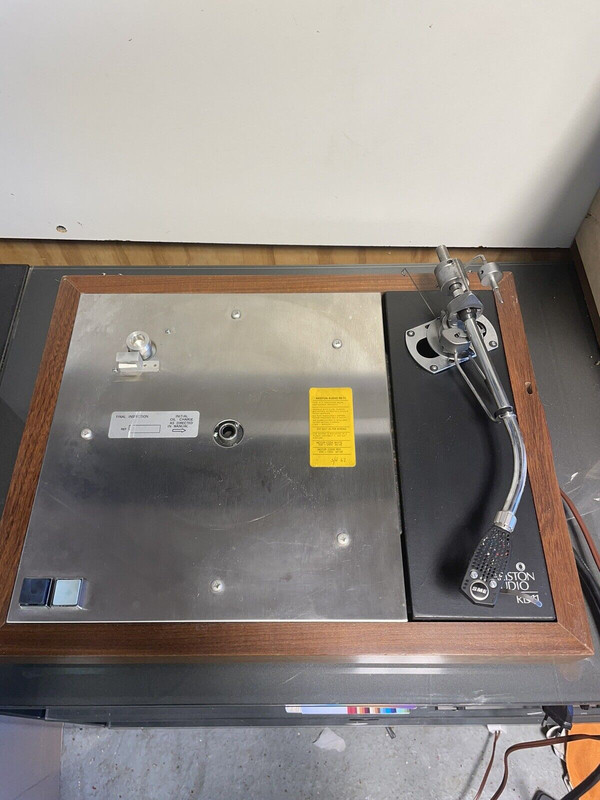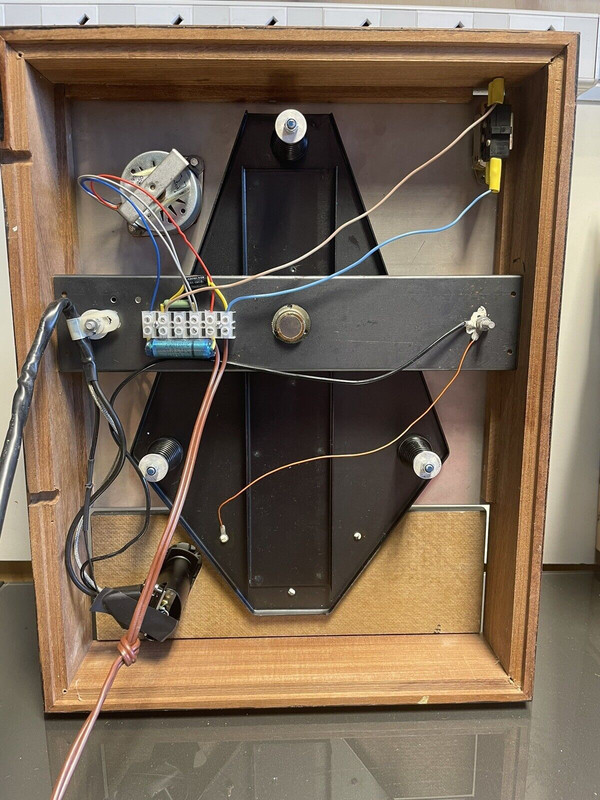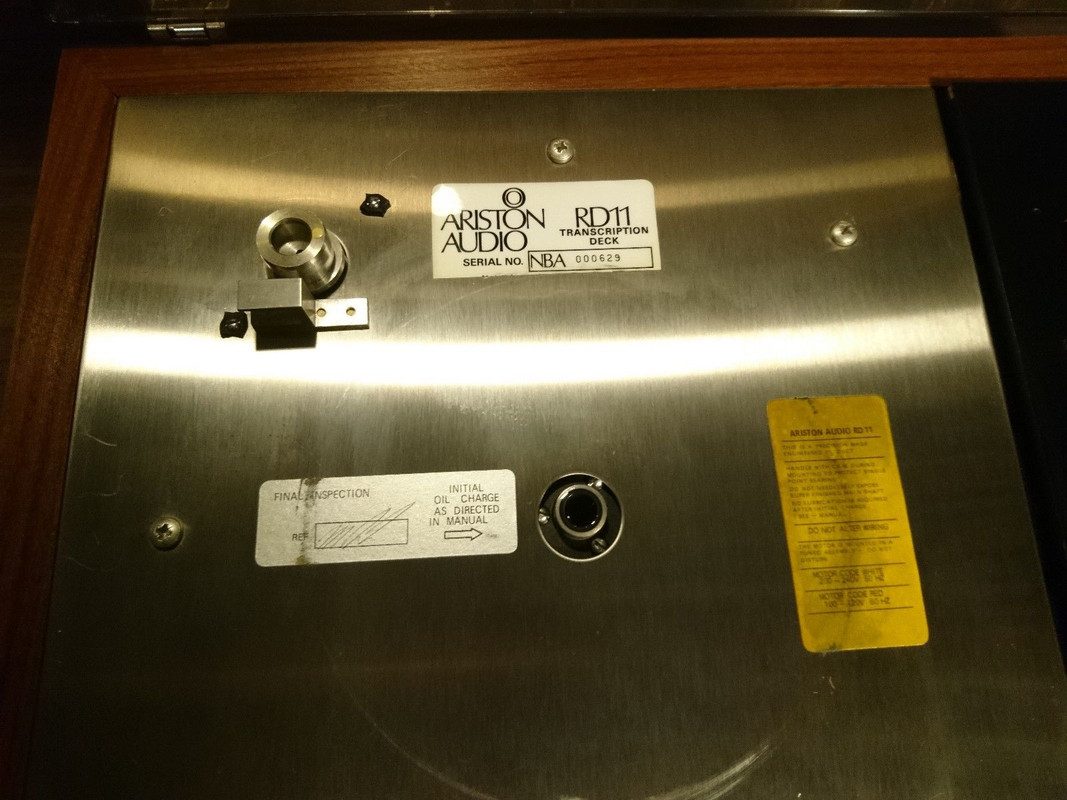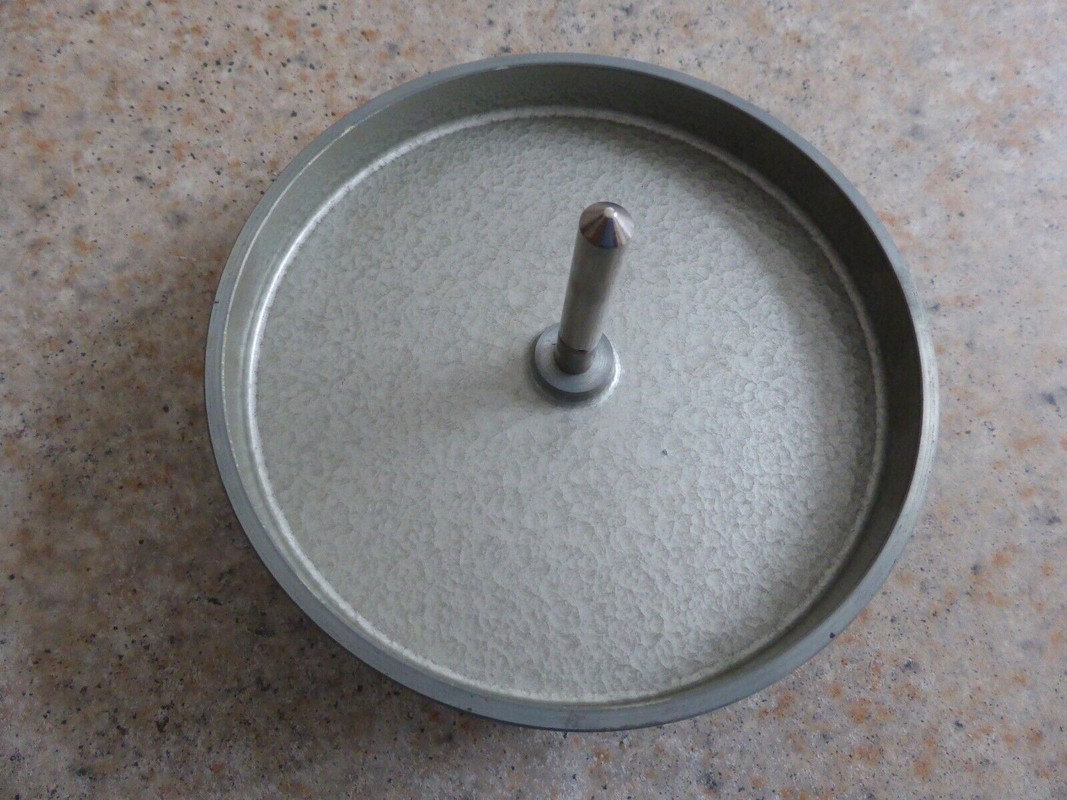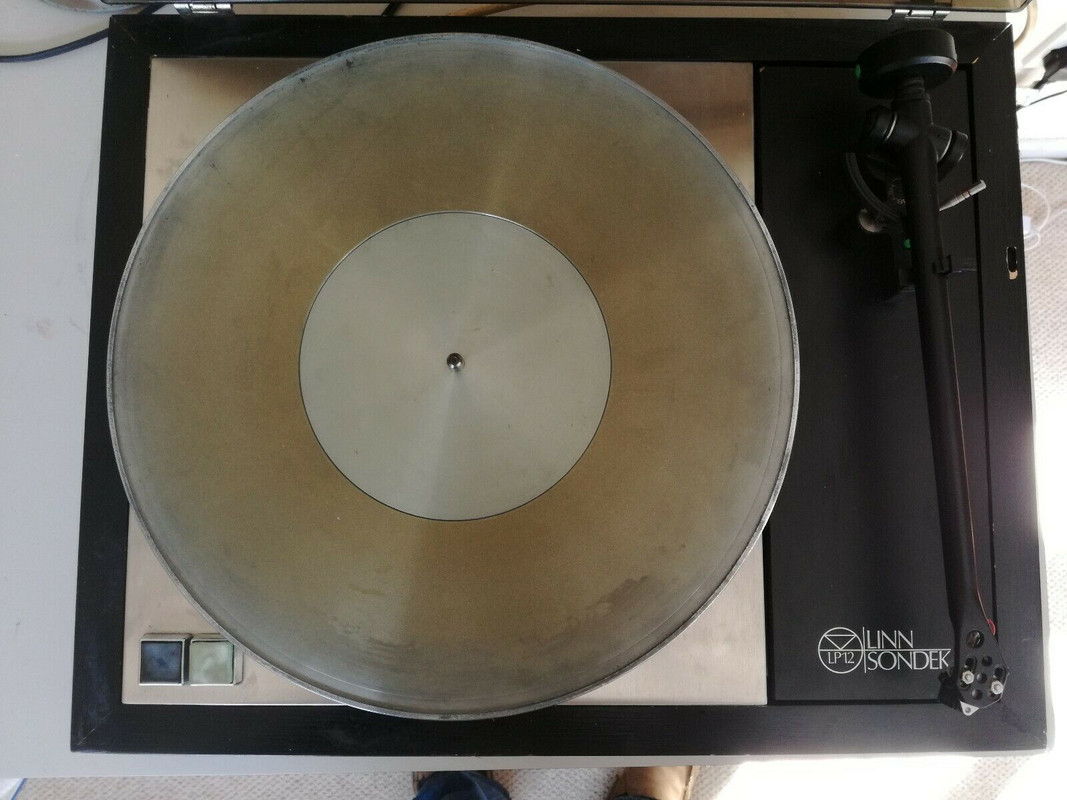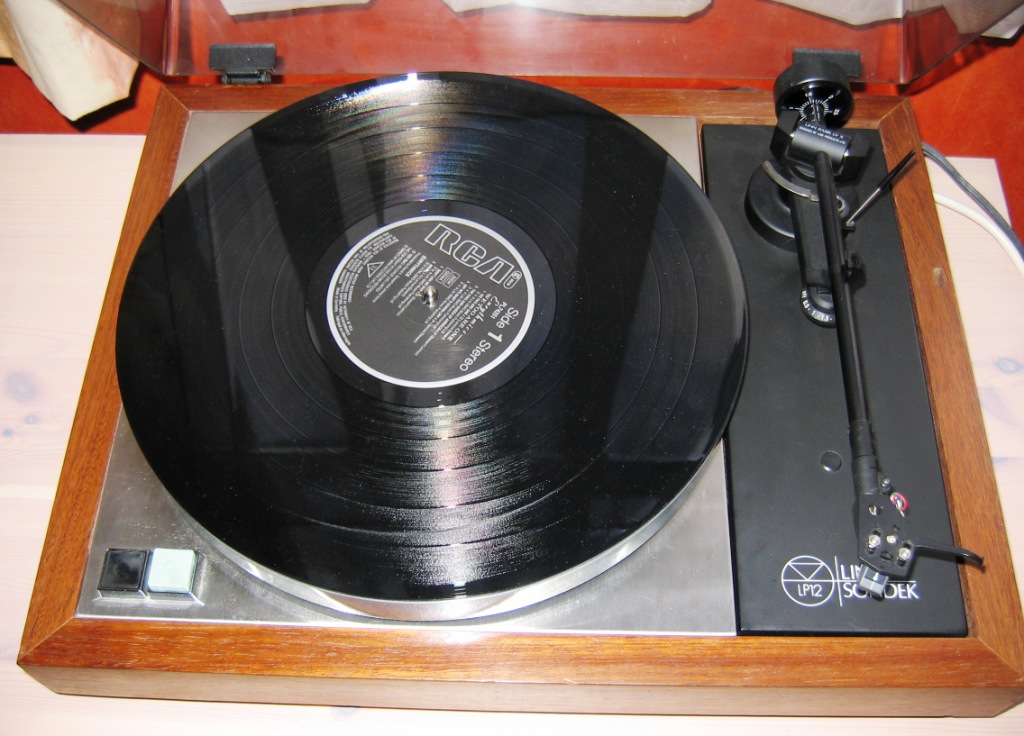The family version does bring out more detailed information about purchase order quantities and the background to the dispute. I have been compiling details of Ariston and early Linn decks that show up or people have mentioned. Early on I was only interested in serial numbers to identify ranges used but the last few years I have also been saving images that are potentially useful for establishing manufacturing variations. In general it is only possible to get a good view of what happened when enough decks show up. Usually those sold on ebay do not show all components of the deck so what I am providing here is a view on what I am seeing based on limited images and could be inaccurate. It could well change as more decks show up. For example the 0091 LP12 twin button deck that was sold on ebay recently is unusual in that it has the buttons in the Ariston configuration while all other twin button LP12s so far have the buttons reversed from that.
There appears to be three phases of twin button decks.
Phase 1 which should include the original 40 ordered that was mentioned in both the family and patent officer versions of the back story. An occasional PFM poster Hamstall is very much the expert on this phase of decks.
These decks have start buttons in the Ariston configuration (black stop green start). They appear to have a sub chassis that is very similar to the later Linn sub chassis with a welded strengthening strap but the rim of the lozenge shaped sub chassis is open at the motor end (thanks to Hamstall for spotting this because fine details sometimes matter). The sub platters are quite different and Hamstall who has owned or handled a few of them believes the outer platter only fits them in one orientation. There is an inner ring just inside the outer rim of the outer platter that is some kind of distinctive manufacturing artefact which was even pictured on the Ariston literature. The outer platters had green felt on the underside of the outer rim. The rim of the pulleys is much more substantial than modern pulleys,

postimg.cc

postimg.cc

postimg.cc

postimg.cc

postimg.cc
The following serials have shown up and suggests there is in the region of 70 to 100 decks in total for this phase.
Those I have labeled CTE (claimed to exist) are from reported sightings by people who I believe to be credible but no images provided.
0001 (CTE) said to be a demo unit which Hamish gave to a customer.
0021 No Ariston serial label, Serial written on the yellow label. WJR initials on the inspection label. The motor pulley unusually appears to be the type used on the Dunlop-Westayr RD11 (this needs to be reviewed if others in the range show up. Was it a later motor swap or was something else going on?).
0061 (CTE)
0067 No Ariston serial label. Serial written on the yellow label. No WJR initials on the inspection label.
0071 (CTE)
0083 Ariston serial label with serial printed. Yellow label. WJR initials on the inspection label.
0089 (CTE)
0095 Ariston serial label with serial printed. Yellow label. WJR initials on the inspection label.
Three other decks have shown up with WJR initials but no serials provided.
One deck is viewable in this thread and has several images of the type of platter used for this phase of decks. It did not have the Ariston Serial Label or yellow label. While it would be possible for the yellow labels to become dethatched the Ariston serial labels are well stuck on so more likely this deck did not have the labels in the first place.
Hi I picked this turntable up yesterday and have reading all about the early days of Linn since yesterday,before then I had never seen an LP12 up close,I would have posted this in the thread when an Ariston RD11 is a Linn LP12 but it has been closed,the only sticker which is left on the top...
audiokarma.org
Another deck in what appeared to be a home made plinth was purchased on ebay by a Hi-Fi journalist also did not have an Ariston inspection label or yellow label.
The 3rd showed up last year on ebay in a slightly different looking plinth, It had the WJR initials and other labels but the serial number was not visible to list it.
Phase 2 - during this phase a different sub platter was introduced which is identical to that used on very early LPs with a hammertone finish on the underside. The rim of the sub platter is thicker than modern LP12s and the spindle is several mm longer than on modern LP12s. Outer platters appear to be the similar to the earlier phase but had black felt on the underside. At some point in this phase they switched to a dual ribbed sub chassis with a cross rib which then continued to be used on the early LP12s. No WJR initials on the inspection labels have showed up so far on this range of decks.
The labels that come with this phase are an inconsistent mess. This along with the cutting of the Ariston serial labels on some of them strongly suggests they were factory sold. The family story stating only very limited numbers were purchased by Hamish plus lack of WJR initials also indicates that these were not purchased by Hamish. The range of serials in this phase implies around 180 to 200 decks were manufactured with the expectation they were going to be purchased by Hamish as Ariston decks. The presence of Ariston style labels (and other Ariston documentation) with these decks is not a great fit for the family story that Castle were a mere supplier of metal parts. Castle would have had to be in possession of significant quantities of the Ariston labels and documents for these to be sold with these decks. Also if the family version that Hamish originally purchased the plinths, dust covers, motors etc is correct then Castle would have had to make their own special follow on procurement to get these decks out of the door in the manner in which they were eventually sold.

postimg.cc

postimg.cc

postimg.cc
00503 - an interesting deck which has a phase 1 sub chassis. Inner platter is the later type. Serial number is on the inspection label using the Linn style and the yellow label is also cut Linn style to remove the Ariston reference. No Ariston serial labels
Hamstall who has owned this deck referred to it as an LP12 due to the labelling. However in my view it is an Ariston that was assembled early but factory sold quite late just before Castle changed to the Linn style labelling. I speculate they used the Ariston serial but for this deck printed it on the inspection label. It does not contain the Linn stamp on the top plate or reference to Linn on the inspection label and does not have the tilt screw holes on the top plate. In addition I have not so far seen any retail LP12s show up between serial 161 and 999 so this serial would be an outlier among LP12 retail serials.
000516 (CTE)
000545 - not in a state of good repair. The black power button exposed and black plate missing. Power buttons configured in Linn style. Yellow label was clearly originally present and intact but has been peeled off. Ariston serial label intact.
000568 - No yellow label but Ariston serial label intact.
000570 - Yellow label and Ariston serial labels intact.
Question: When is an Ariston a Linn ? Answer: When It’s a RD11!! There is an important distinction to be made between the Ariston RD11 and the Ariston Audio RD11s. The Ariston RD11 was produc…

linnsondek.wordpress.com
000624 - No yellow label but Ariston serial label intact.
000629 - Yellow label intact. Ariston serial label present but "Made In Great Britain By Ariston Audio Ltd is cut off. Squiggle signature on the inspection label. Both the yellow and Ariston serial labels are quite clear that it is an Ariston deck so they only appear to have been twitched about the manufacturing origin.
000640 - No images of the serial labels but the serial is written on the guarantee card which is identical to the card used for 000021. Came with what appears to be a home made plinth. Paperwork with the deck shows that Castle were offering chassis only or with plinth options.
000668 - Yellow label intact. Ariston serial label present but "Made In Great Britain By Ariston Audio Ltd is cut off. Squiggle signature on the inspection label.
000672 - Ariston serial label present but "Made In Great Britain By Ariston Audio Ltd is cut off. Squiggle signature on the inspection label. Home made plinth.
Phase 3 - these have serial numbers that inter mingle with Linn LP12 retail decks but do not have Linn fluted plinths and are believed to be factory sold. It is a possibility that some of these were rebadged phase 2 decks factory sold as LP12s. The serial badges refer to Linn Products and "Linn Products Patents Pending" is stamped on the top plate the same as retail decks. They come with the yellow labels but all have the reference to Ariston cut off as also happened with all retail LP12s up to serials around 4400. The top plates cater for motor tilt screws on these decks. I suspect they also came with Linn style outer platters in that I have not seen the phase 1 Ariston manufacturing ring artefact on those that have shown up where an image of the outer platter was provided.
0005 - chassis only
0018
0022
0034 - (CTE)
0039 - youtube video but serial labels not shown
0088
0091
I have logged inter mingled retail LP12s up to serial 0160 but then a gap up to 999 with a new range of serials then kicking in from around 1000.
2940 - CTE - apparently images were provided on the old Linn forum but I do not have them
3503
I am not aware of any twin button deck with a higher serial. There is a gap in the LP12 retail serials from around 4400 and a new range kicked in at 10000. The highest retail serial I have recorded which used the mutilated yellow label is 4361 when they also swapped away from the use of the original inspection label.




